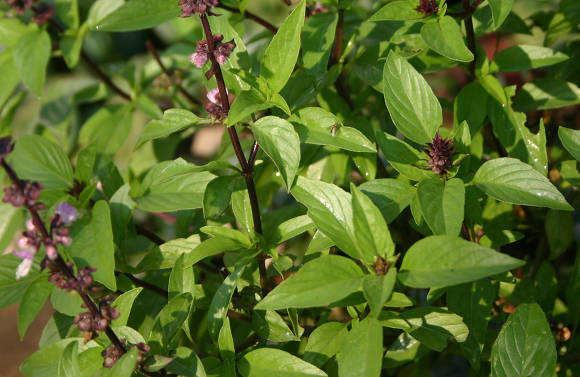
Thai basil can be successfully grown both indoors and outdoors, provided the plant has good access to sunlight during certain times of the day, and water is abundant and regular. This type of basil can be grown in a heated and well-lit room all year round, although it is not very fond of the cold and is very afraid of drafts. Like any tropical plant, horapa really does well only in very warm climates, even without a hint of frost.
In addition to its taste and decorative qualities, another advantage of Thai basil in the garden is that it repels some garden pests such as aphids and various mites. This is why many gardeners choose it as a companion to protect their more susceptible plants.
If you have made up your mind to grow Thai sweet basil in your garden, your first task is to get your hands on the coveted plants. You will have to seriously look for Thai basil in nurseries or you can start by purchasing seeds. If you buy plants from a nursery, take some basil and a few rosemary bushes as well. Rosemary and Thai basil grow very well when planted together as they both love to enjoy the same drained soil, clean water, and fertilizer. Handle the plants with care as they are quite delicate. If you have to start with seeds, then you first have to grow seedlings.
Seeds are sown on April 10-20. The development period from germination to harvesting, for example, in the Siam Large-leaf variety, is 50-60 days.
Seedlings are transplanted to their areas in the open air, when the plants grow 6-8 cm in height, and really warm summer weather has established in your garden. When planting, the distance between plants should be at least 20 cm.
It is necessary to plant Thai basil in a sunny place, absolutely protected from the winds. During the active growing season, the plant needs watering and feeding. Nutrient-rich fermented herb infusion 2-3 times during the growing season is excellent as a top dressing.
The sun is a key factor in the cultivation of Thai basil. Plants of this type of basil need at least 6 hours (or better 8) of direct sunlight to flower.
Watering weekly, but not over the leaves. Excessive watering will cause the leaves to turn yellow and fall off, and insufficient watering will cause flowers and buds to suffer, so it is important to achieve balance when watering Thai basil.
Be careful when collecting Thai basil, as the leaves break easily. Harvest the leaves in the morning, at which point the aroma of the growing Thai basil will be at its maximum. Also, to enhance the flavor, pour over Thai basil shortly before harvest.

Typically Thai basil is harvested by plucking or cutting one leaf at a time as needed for cooking and other purposes. However, to encourage the grass to grow more leaves, it is recommended that you do not remove individual leaves, but simply pinch off the top of the stem to the level where the other two leaves appear. This method allows the plant to produce new growth. Always use clean, sharp garden shears when cutting leaves and stems.
The growth form of Thai basil is more compact than other types of basil, so the harvest is harvested from the top, otherwise the stem may begin to rot. If you make a mistake, just cut the stem to the next leaf node.
If you are not growing Thai basil as an ornamental plant, cut the flowers a few days before harvest so that the plant can focus all its energy on the leaves, especially since the bitterness in the leaves will intensify with a long flowering.
Read also articles:
- Mr thai basil
- Thai basil: useful and medicinal properties
- Thai basil in cooking









